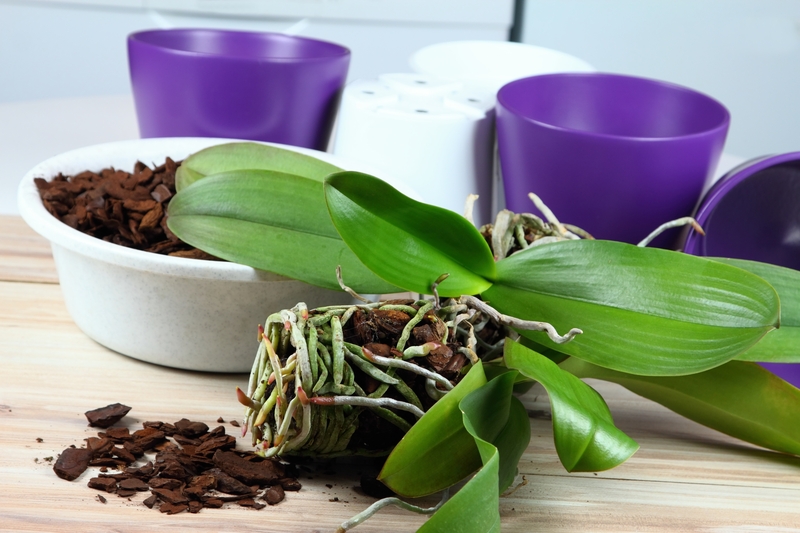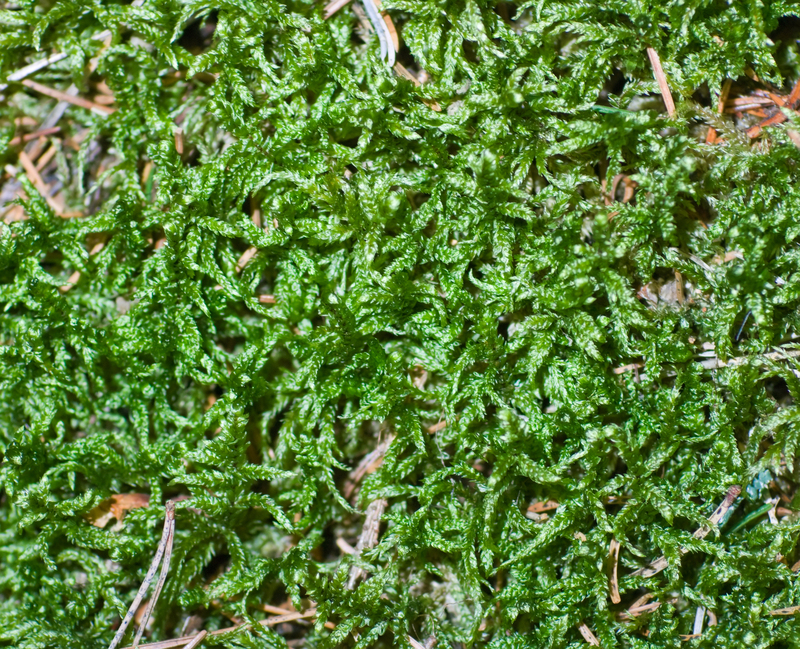Nurturing a Garden Wonderland for Young Minds
Posted on 01/09/2025
Nurturing a Garden Wonderland for Young Minds: Inspiring Curiosity, Learning, and Growth
Every child has an innate curiosity about the world around them. What better way to foster that sense of wonder than by introducing them to the magic of gardening? Nurturing a garden wonderland for young minds isn't simply about planting seeds -- it's about cultivating imagination, responsibility, and a lifelong love of nature. In this comprehensive guide, we'll explore how you can transform any space into a garden paradise that stimulates learning, creativity, and joyful exploration for children.
Why Create a Garden Wonderland for Children?
Providing children with the opportunity to connect with a garden wonderland offers a wealth of benefits that reach far beyond horticulture:
- Hands-on learning: Kids see science, math, and art come alive in the garden.
- Environmental stewardship: Early exposure nurtures respect and care for the planet.
- Healthy habits: Growing and eating their own produce encourages better nutrition.
- Emotional growth: Gardening is calming, rewarding, and helps build patience and resilience.
- Physical activity: Digging, planting, and harvesting get children moving outdoors.
When you purposefully design a children's garden wonderland, you transform a patch of dirt into an enchanted learning environment--one that fosters empowered, inquisitive, and happy kids.

Planning Your Young Minds' Garden Wonderland
Step One: Assess Your Space and Resources
Whether you have a sprawling backyard or a modest balcony, every space holds potential. Consider:
- Sunlight: Most vegetables and flowers need at least 6 hours of sunlight daily.
- Soil: Check your soil type and amend as needed for plant health.
- Water source: Ensure your garden is accessible for little hands and easy watering.
- Safety: Remove harmful plants, thorns, or sharp objects.
- Accessibility: Raised beds, containers, or vertical gardens can help small children reach everything.
Step Two: Get Kids Involved from the Start
Engaging children during the planning phase builds their excitement and investment in the project. Involve them by:
- Brainstorming garden themes (e.g., fairy gardens, dinosaur landscapes, edible jungles)
- Selecting colorful and interesting plants
- Designing the layout--drawing, mapping, or modeling out ideas
- Creating fun garden zones for play, art, study, and relaxation
Remember, the ultimate goal is nurturing a wonderland for young gardeners--a place that reflects their dreams and encourages playful exploration.
Choosing Child-Friendly Plants for Your Garden Wonderland
The plants you choose can make all the difference in engaging young minds. Look for:
- Fast-growing plants like sunflowers and radishes for quick gratification
- Edible treasures such as strawberries, cherry tomatoes, and sugar snap peas
- Sensory plants that invite touch, scent, and sound--think lamb's ear, lavender, and ornamental grasses
- Pollinator favorites, including zinnias, cosmos, and milkweed to attract butterflies and bees
- Curious oddities like giant pumpkins or multicolored carrots to spark amazement
Tip: Invite children to select a few plants themselves--this personal choice strengthens their sense of ownership and anticipation.
Design Elements that Enchant and Educate
Transform your young learners' patch into a garden wonderland with creative additions:
- Winding paths for journeying through the garden and discovering hidden surprises
- Miniature habitats --build bug hotels, birdhouses, or a frog pond
- Themed areas such as a pizza garden, butterfly corner, or herb teepee
- Secret spaces for reading, drawing, or imaginative play (think willow tunnels, sunflower fortresses, or vine teepees)
- Art installations: painted rocks, ceramic sculptures, or DIY fairy doors
Every detail should aim to excite curiosity and provide opportunities for fun, learning, and mindfulness in nature.
Integrating Learning: Education in the Children's Garden
Science and Math Concepts
There's no better classroom than a living garden wonderland for nurturing young minds. Children can observe:
- The life cycles of plants and insects
- Weather patterns and their effects
- Measurement and data collection (growth charts, rainfall logs)
- The chemistry of soil and photosynthesis
Gardening naturally weaves STEM learning into everyday play.
The Art of Observation and Documentation
Encourage garden journaling through drawing, photography, or note-taking. Over time, children will see the magic of change and growth--a valuable lesson in both nature and life.
Language and Storytelling
Ask children to name their plants, invent garden stories, or write poems inspired by their green haven. Their garden wonderland becomes a wellspring for creativity and self-expression.
Cultivating Responsibility, Empathy, and Teamwork
Giving children roles--such as chief seed planter, water watcher, or harvest helper--instills a sense of purpose. They learn firsthand about responsibility, patience, and the consequences of care (or neglect). Gardening with siblings, friends, or classmates also teaches:
- Communication and cooperation
- Respect for different opinions and abilities
- Delighting in shared successes and learning from mistakes together
A nurturing garden for young minds is also a training ground for compassionate citizens and lifelong learners.
Celebrating Growth: The Joy of Harvest
The excitement of a first flower bud, the thrill of picking sweet peas, or the pride in creating a salad from your own patch--these are moments that anchor a child's sense of achievement and connectedness.
Make harvest part of larger celebrations:
- Cook and share a simple meal with garden produce
- Host a tea party with fresh herbs
- Hold a garden show-and-tell for family and friends
- Gift bouquets or veggies to neighbors
Marking these milestones reinforces the garden's magic and the child's investment in it.
The Magic of Seasons in a Children's Garden Wonderland
A true garden wonderland for young minds is alive with changing colors, textures, and rhythms year-round. Guide children to:
- Plant bulbs in fall for springtime surprises
- Feed birds and observe hibernation in winter
- Sow seeds and spot pollinators in spring
- Harvest and compost in summer and autumn
Through all seasons, the garden is a living teacher--revealing the cycles of life, resilience, and the beauty of change.
Tips for Overcoming Common Gardening Challenges with Kids
- Short attention spans? Keep tasks simple, and mix garden time with active games, crafts, or stories.
- Limited space? Container gardening or vertical planters can work wonders even on balconies.
- Pests or setbacks? Use challenges as teaching moments about resilience, natural cycles, and problem-solving.
- Lack of green thumb? Remember, the goal is process over perfection. Celebrate effort, observation, and experimentation.

Resources to Help You Nurture a Garden Wonderland for Young Minds
Many organizations offer wonderful gardening guides, activities, and curricula for children. Here are a few to inspire you:
- National Gardening Association KidsGardening.org--project ideas, grants, and tips
- Royal Horticultural Society School Gardening--resources and activity packs
- Botanical gardens and local nurseries--often offer workshops for families
Books: "Roots, Shoots, Buckets & Boots" by Sharon Lovejoy; "The Garden Classroom" by Cathy James.
Nurturing a Garden Wonderland for Young Minds: The Seed for a Lifetime
Planting a garden is much more than a weekend activity; it's a gift that grows with children as they mature. In the enchanted haven you create together, skills are honed, confidence is built, and a connection to the earth takes root. More importantly, every moment in a child's garden wonderland teaches resourcefulness, empathy, joy, and wonder--qualities our world needs now more than ever.
If you're looking for a way to make a lasting impact on a young life, begin by nurturing a garden wonderland for young minds. The seeds you plant today may bloom into a future where your child treasures the planet, embraces learning, and cultivates happiness wherever they grow.
Ready to get started? Roll up your sleeves, invite your young explorers, and watch as your garden--and their minds--blossom into something truly magical.
For more ideas, tips, and project guides on creating a children's garden wonderland, explore our expert resources and share your stories--because every garden grown for young minds adds beauty, wisdom, and hope to the world.

